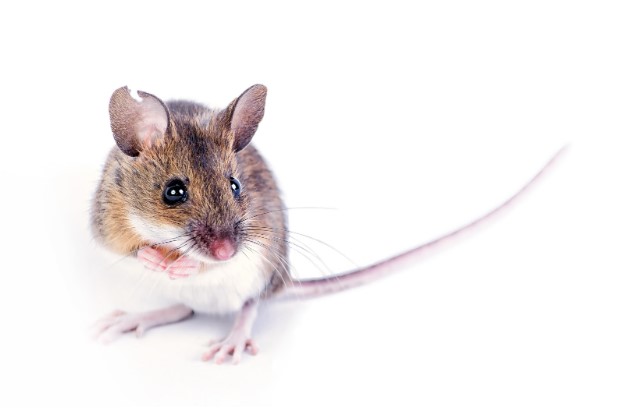Summer Pest Prevention: How to Protect Your Home and Outdoor Living Space from Pesky Seasonal Invaders
July 17, 2020 •Brian Hogan

Summer may be the season when you’re itching to get outdoors as much as possible, but it’s also the time of year when a variety of pests — ranging from ants, beetles, and wasps to bats, squirrels, and skunks — are just as determined to find shelter in, under, or around your house.
While your home may look and feel like a solid, impenetrable fortress, uninvited guests have an uncanny knack for finding tiny cracks, unsealed gaps, and other opportune points of entry.
But warm weather doesn’t have to mean sugar ants foraging in your kitchen, squirrels living in your attic, skunks burrowing under your front porch, wasps nesting in the siding of your house, or carpenter bees seeking shelter in your deck.
Here’s how to protect your home and outdoor living space from seasonal pests this summer.
Basic Pest Prevention
Before you tackle the problems and irregularities in and around your home that make it more susceptible to unwanted guests large and small, it’s important to “clean house” and implement basic pest prevention strategies.
Food, water, and shelter are the three things that make your indoor and outdoor spaces more appealing to insects, rodents, and wildlife. Your home is less appealing when you:
- Seal non-refrigerated food in airtight containers
- Remove garbage from your house regularly
- Place food scraps in tightly covered trash or compost bins
- Take away pet food and water dishes at night
- Get rid of clutter in the basement, attic, and garage
- Fix plumbing leaks to prevent hidden moisture
- Keep your basement and attic dry and well-ventilated
- Store firewood away from your house and off the ground
Once you’ve made food, water, and temporary hiding places less available in and around your house, it’s time to address the other pest superhighway: accessibility.
Advanced Pest Prevention
Unfortunately, even if you implement basic pest prevention strategies to perfection, pests will still be able to find ways to access your house, deck, and garage if such entry points exist.
This means making your indoor space and outdoor structures as inaccessible as possible. To do that, you’ve got to find — and eliminate — each and every “pest point of entry.”
Outside Your Home
This requires you to closely examine the exterior of your house for cracks, gaps, and holes. It also requires you to examine key wall penetrations like doors, windows, dryer vents, roof vents, and utility line openings. Then, you should:
- Seal all glaring exterior cracks, holes, and gaps
- Seal gaps between the foundation and siding
- Seal gaps between trim, doors, windows, and siding
- Seal gaps around utility and plumbing entry points
- Repair fascia and soffit gaps; replace rotted roofing
- Add a chimney cap, or replace it if it’s damaged
- Replace weather-stripping around basement windows
- Repair loose mortar around the foundation
Remember, if you can easily slide a pencil into a crack, a young mouse (and pretty much any insect) can fit through it, too.
Inside Your Home
Next, examine every square foot of your home’s interior (walls, ceilings, floors, trim, windows, and doors), looking for the same kinds of crevices and cracks that make it possible for pests to enter. Then, take time to:
- Fill gaps around interior pipes and gas lines
- Repair cracks and holes in drywall or plaster
- Repair gaps in or along baseboards
- Repair gaps between the wall and ceiling
- Add weather stripping to exterior doors
- Close gaps and holes in loose window frames
- Keep your crawl space and attic closed off
You may not have much work to do inside your house if you live in a newly constructed home, but if you live in an older home or even a historic one, chances are you’ll always be able to find a new “pest point of entry” you hadn’t noticed before.

Don’t Forget the Deck
When it comes to pest prevention, your outdoor living space requires as much consideration and protection as your home. Because of your home’s outdoor spaces — such as your deck, front porch, pergola, or gazebo — are actually more exposed to insects and critters, they demand special attention.
An unfinished deck is ripe for invasion: termites, carpenter ants, and carpenter bees (among other wood-loving insects) spend their lives eating through wood or boring holes into it so they can create a sheltered place to nest.
If your deck is unfinished or hasn’t been sealed recently, seal it with a new protective coat as soon as possible — and as often as recommended. A well-maintained deck attracts far fewer pests than a poorly maintained one.
To keep rodents and wildlife (like skunks, phew!) from nesting under your deck or porch, cover the gap between the deck and the ground with a strong mesh screen.
It’s also important to keep the trees and shrubs near your home well-trimmed; branches that touch your house or (even get close to it) serve as bridges for insects as well as wildlife.
If your house has already been invaded by pesky critters, you may be looking for a DIY fix or to hire a home service. Before you pick up a pesticide and start spraying/laying traps, we recommend reviewing and following safety measures to keep you and your loved ones safe at home.
Is your home in need of a bigger fix than just sealing a few cracks? Hogan Design & Construction is happy to help you with your renovation journey. Remodeling a room or home can be a big undertaking, but our client-tailored process eliminates a lot of the stressors that come from a home project.
And for more home-related tips from the team at Hogan Design & Construction, subscribe to our monthly e-newsletter or follow us on Facebook or Instagram.

